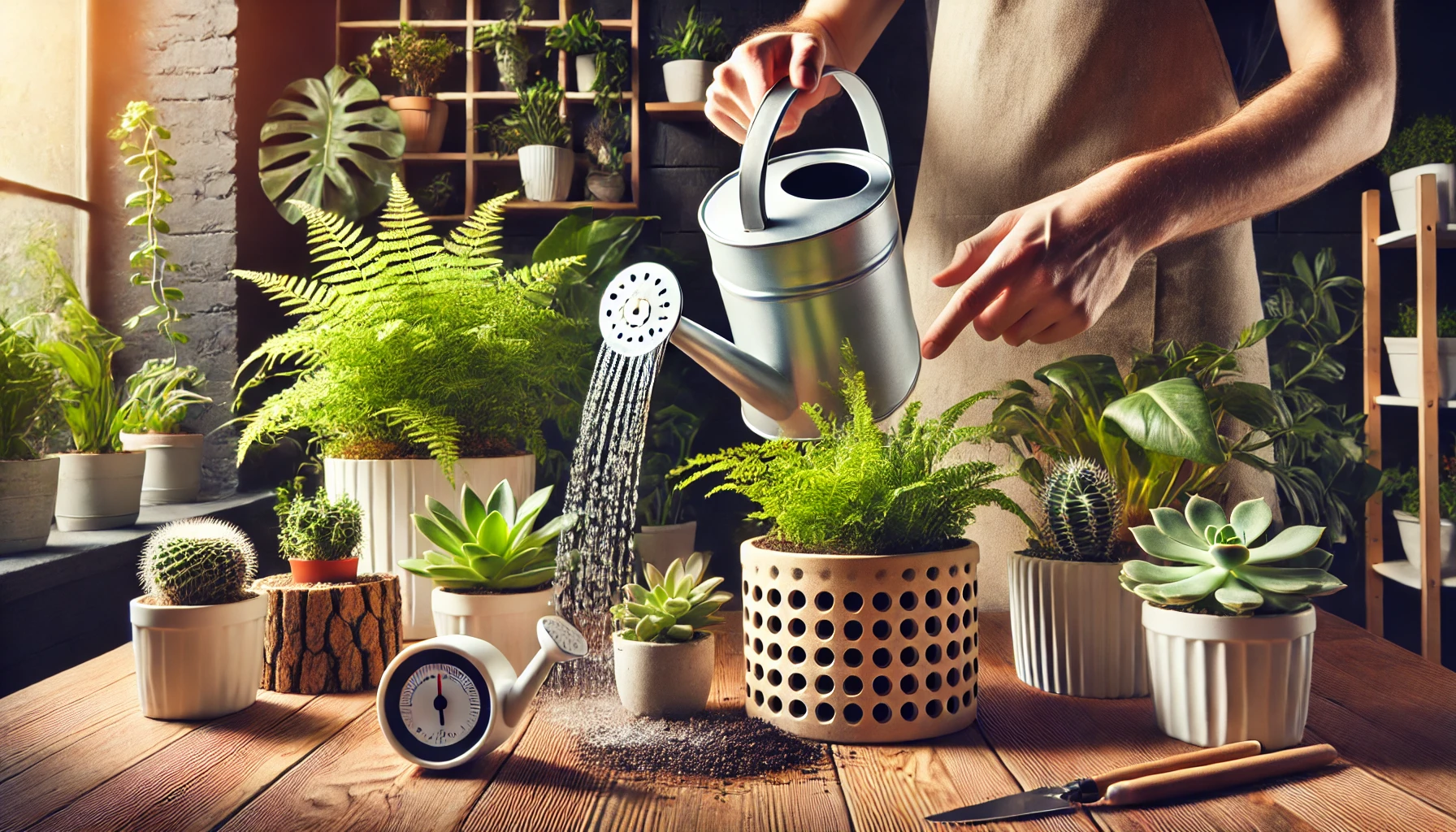Watering may seem like the simplest part of plant care, but it’s often where many plant owners make mistakes. Overwatering, underwatering, and inconsistent watering schedules can all harm your plants. In this article, we’ll discuss how to water your plants the right way, ensuring they stay healthy and thrive.
Why Watering Is So Important
Water is essential for plant survival as it transports nutrients from the soil to the plant’s cells, supports photosynthesis, and helps maintain cell structure. However, different plants have unique water requirements, and too much or too little water can lead to problems such as root rot, leaf drop, or stunted growth.
Signs of Overwatering and Underwatering
Overwatering
- Yellowing or browning leaves that feel soft and mushy.
- Soil that remains constantly wet or has a foul odor.
- Drooping or wilting despite wet soil.
- Roots that appear black or mushy (a sign of root rot).
Underwatering
- Crispy, brown leaf edges or tips.
- Soil that is dry and pulls away from the sides of the pot.
- Leaves that curl, droop, or fall off.
- Stunted growth or slow development.
How to Water Your Plants Correctly
1. Check the Soil First
Always check the soil before watering. Insert your finger about an inch into the soil; if it feels dry, it’s time to water. For larger plants, use a moisture meter for accuracy.
2. Water Deeply and Evenly
When watering, aim to saturate the soil evenly. Water until excess begins to drain from the bottom of the pot, ensuring the entire root system is hydrated. Empty the drainage tray to prevent waterlogging.
3. Use the Right Amount of Water
Different plants require different amounts of water. Succulents and cacti need infrequent, light watering, while tropical plants like ferns and calatheas prefer consistent moisture. Research your plant’s specific needs to avoid over- or under-watering.
4. Water at the Right Time of Day
Water your plants in the morning to give them time to absorb moisture before the heat of the day. For outdoor plants, morning watering reduces evaporation and prevents fungal growth caused by water sitting on leaves overnight.
5. Avoid Wetting the Leaves
Direct water to the soil rather than the leaves to minimize the risk of fungal infections. For plants like African violets, wet leaves can lead to unsightly spots and diseases.
Best Practices for Indoor Plants
Choose Pots with Drainage Holes
Always use pots with drainage holes to prevent water from pooling at the bottom. Without proper drainage, the risk of root rot increases.
Group Plants by Water Needs
If you have multiple plants, group those with similar watering requirements together. This makes it easier to maintain a consistent care routine.
Use Room-Temperature Water
Cold water can shock your plants, while hot water can damage roots. Use water that is at room temperature to ensure optimal absorption.
Best Practices for Outdoor Plants
Consider the Weather
During rainy periods, reduce watering to avoid waterlogging. In hot or windy weather, plants may need more frequent watering to compensate for moisture loss.
Mulch to Retain Moisture
Adding a layer of mulch around outdoor plants helps retain soil moisture and reduces the need for frequent watering.
Water the Base of the Plant
Focus watering on the soil at the base of the plant, avoiding flowers and foliage to reduce the risk of disease.
Common Watering Mistakes to Avoid
- Watering on a Fixed Schedule: Plants’ water needs vary depending on the season, humidity, and growth stage. Adjust your watering routine accordingly.
- Using the Wrong Pot: Pots without drainage holes or that are too large can retain excess water.
- Ignoring Plant-Specific Needs: Not all plants thrive with the same watering frequency. Research each plant’s requirements to avoid stress or damage.
Special Considerations for Different Plant Types
- Succulents and Cacti: Allow the soil to dry completely between waterings. These plants store water in their leaves and stems, so overwatering can be fatal.
- Tropical Plants: Keep the soil consistently moist but not soggy. Misting leaves can also help increase humidity.
- Orchids: Water when the roots appear silvery-white, and avoid letting the pot sit in standing water.
Watering your plants correctly is one of the most important aspects of plant care. By understanding your plant’s unique needs and following these guidelines, you’ll create a thriving environment for your greenery to flourish.
